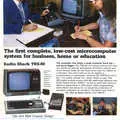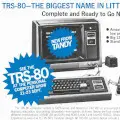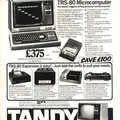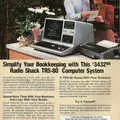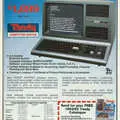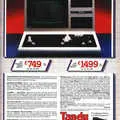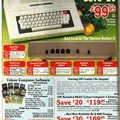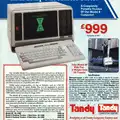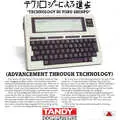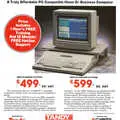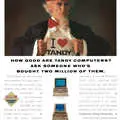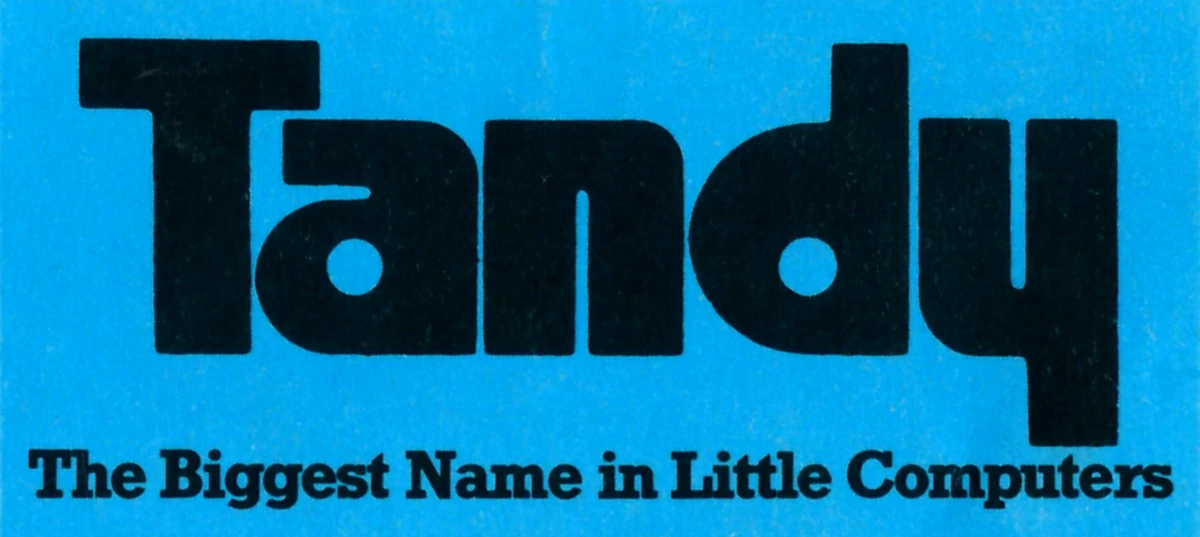
Tandy/Radio Shack Advert - December 1984
From Personal Computer World
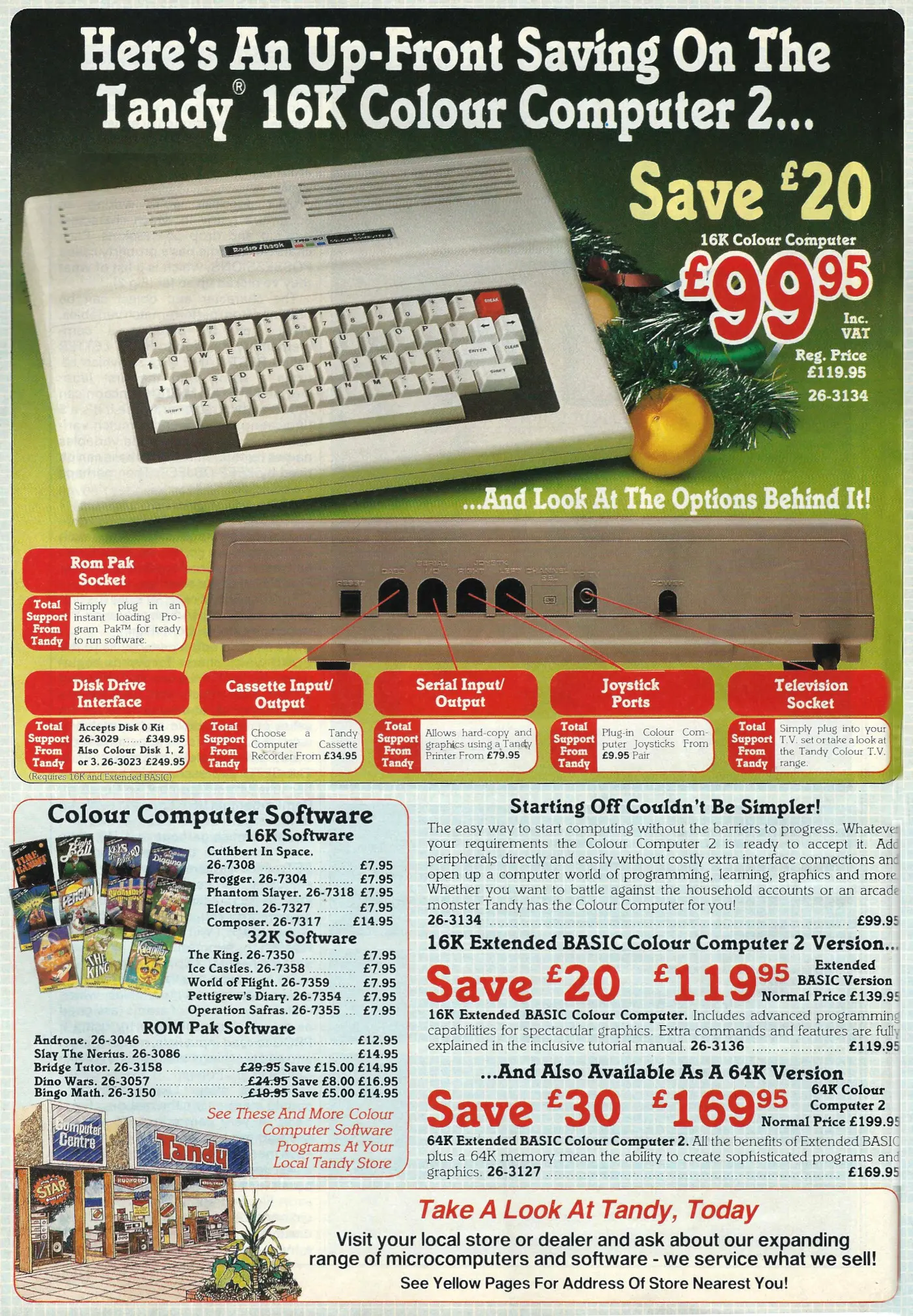
Here's an up-front saving on the Tandy 16K Colour Computer 2
Here's a festively-themed advert for the second version of Tandy's Colour Computer 2, or "CoCo".
With £20 off coz it's Christmas, the CoCo was available for only £99.95 - only £420 in 2025 money.
Still nominally known fully as the TRS-80 Colour Computer, the original CoCo was launched in 1980 at the dawn of the home computer explosion, and only three years after the first three - the Commodore PET, original TRS-80 and Apple II.
The CoCo, however, was not compatible with the original TRS-80, as it used Motorola's 6809E instead of the previous Zilog Z80[1].
The use of the Motorola 6809 did however put the CoCo on an eventual collision-course of sorts with the Dragon 32 and 64 micros, as the latter computers used the same unusual processor and as a result had a lot of compatibility with the Tandy.
The two machines were close enough that when Dragon Data was put up for sale at the end of 1983, following the collapse of its parent company Mettoy, Tandy/Radio Shack briefly considered a buy-out[2].
Tandy eventually decided against the idea, and Dragon went to GEC.
What made the otherwise-ordinary CoCo 2 interesting was that it supported a Unix-like operating system, rather than the standard BASIC interpreter/command line.
OS-9 - long before Apple re-used that name - came from Microware Systems Corporation and had been written for Motorola. Unfortunately, it did require a floppy disk unit, which added another £350 (£1,470) to the cost.
Running BASIC-09 on top of that cost £70 and required a second floppy drive, for another £250. That's now a total of £770 - a not insubstantial £3,250 in 2025.
The OS-9 system was somewhat limited, for a Unix, but it still allowed either two users, or one user and a printer, to be active at the same time. Users actually had to log in, just like on a real Unix system, and had the same three attempts to log in allowed before aborting.
Kathleen Peel concluded in her mixed review of the CoCo 2 in May 1984's Your Computer that:
"Unfortunately, the hardware hardly does the software justice. The limitations on the number of users suggests that the CoCo is really the lowest level at which such a [Unix] operating system can be implemented. There is no doubt that for someone who loves his CoCo this represents a natural extension which will be very well received. This is not simply old Basic but a real operating system which is not only very comprehensive, but very complex and not at all suitable for the occasional user. It will be of use to those who want hands-on eperience of a Unix-type operating system and wish to learn on a computer setup that enables the experience to be gained in easy stages.[3]".
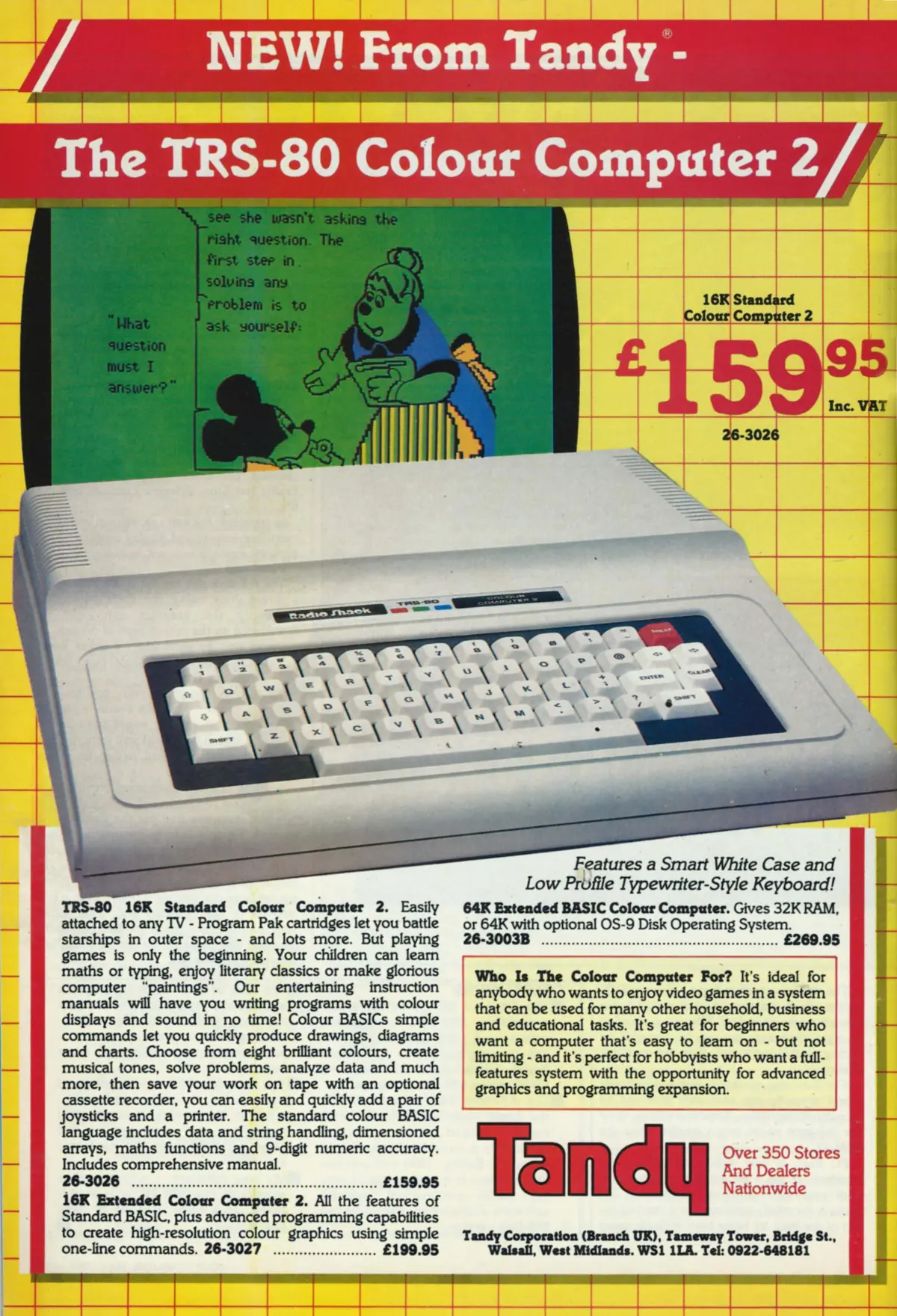
An advert for the Colour Computer 2 from only a few months before, where the same machine had been a full 50% more expensive. From Your Computer, May 1984
Tandy had resolutely stuck with its TRS-80 designation since the first model in the range, launched way back in 1977. However, by 1985 it was facing declining market share and indifference towards its recent Model 4 range.
And so, as was the fashion at the time, it launched its Model 2000 - faster and better than the IBM PC, but sadly not entirely compatible with it.
David Ahl of Personal Computer World reckoned that Tandy should have asked its Texan neighbour TI all about the joys of launching not-quite IBM clones.
It fixed this particular problem when it launched the fully-compatible Model 3000 at the beginning of 1986, along with multi-user capability and a reorganised direct-sales-focussed salesforce.
However its bigger move was perhaps that it finally dropped the TRS-80 designation as well as the "Radio Shack" part of its name, which had been in use since the company's founding in 1921, with the hope that the re-branding might make it more attractive in the Fortune 1000 corporate market.
However, Ahl suspected that the Radio Shack image might hold the company back for a lot longer than it suspected[4].
Date created: 12 December 2019
Last updated: 11 December 2024
Hint: use left and right cursor keys to navigate between adverts.
Sources
Text and otherwise-uncredited photos © nosher.net 2025. Dollar/GBP conversions, where used, assume $1.50 to £1. "Now" prices are calculated dynamically using average RPI per year.
